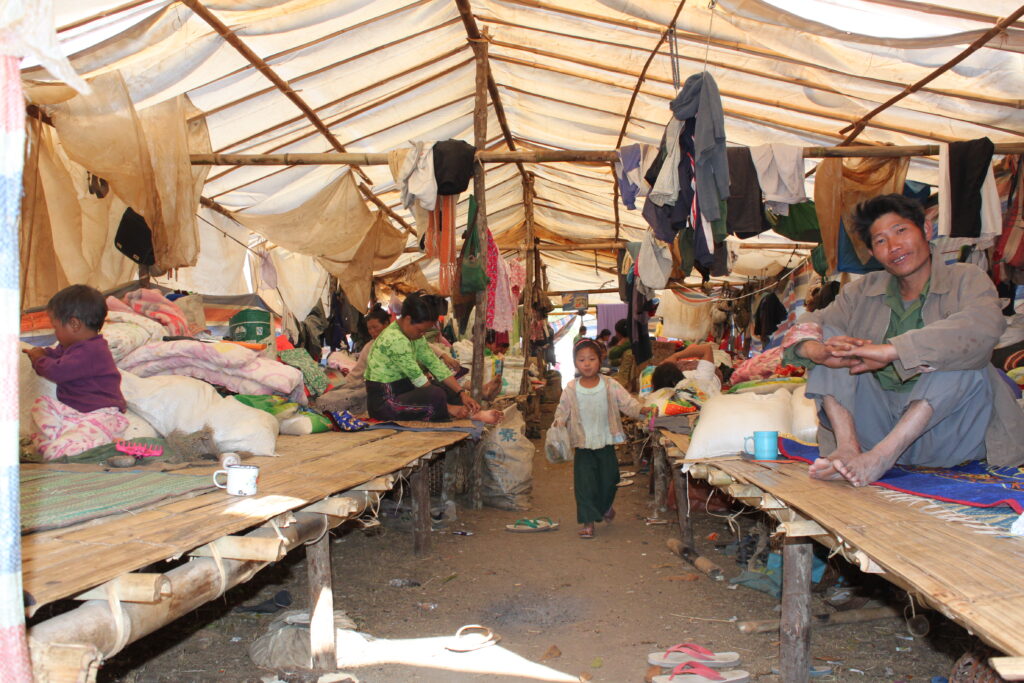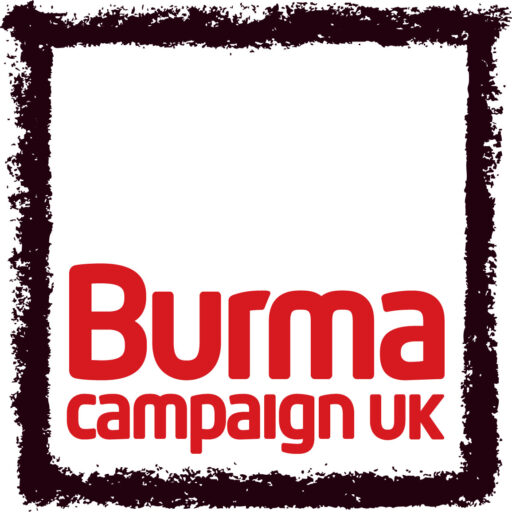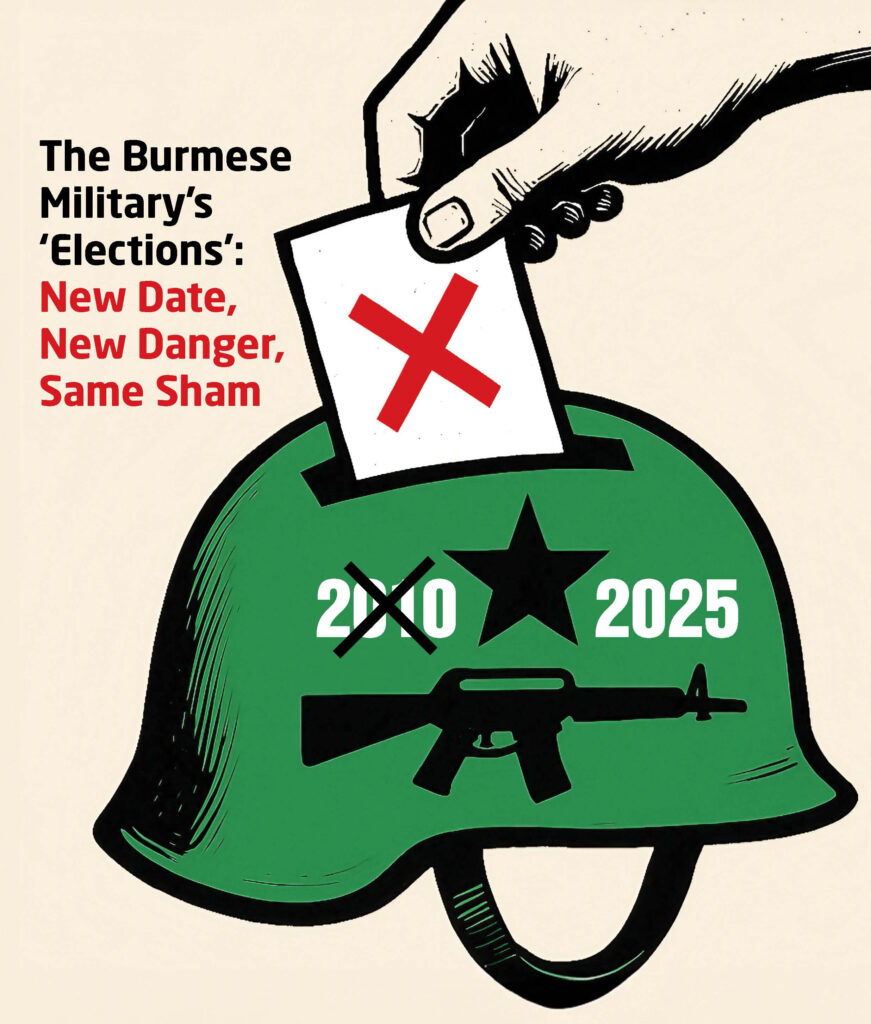The Burmese military are planning new elections at the end of 2025. They will clearly be a total sham and mostly rejected internationally and domestically. The Burmese military know this but are calculating that it doesn’t matter.
They want to repeat what happened with the 2010 elections. Those elections were also rejected, but the international community went on to drop sanctions and support the regime it had previously described as illegitimate.
The Burmese military likes elections almost as much as it likes coups. For the Burmese military, elections are an opportunity to rebrand, renew, and try to convince the people of Burma and international community that reforms are finally happening (again).
Whether wilfully ignoring reality for the sake of expediency (or investment opportunities), or genuinely falling for Burmese military lies and propaganda, the international community goes along with it. Phrases like “we have to wait and see,” “we have to reward positive steps,” “prospects for peace,” “there is a window of opportunity,” get dusted off and recycled again.
The Burmese military is currently fighting for its very survival. In early 2025, the BBC estimated that the military is only in full control of around 20% of the country. Its latest administrative brand name, the State Administrative Council (SAC), has failed to gain the international legitimacy it craves.
At the same time as being under threat domestically, the limited international sanctions which have been introduced so far are clearly hurting the military. Military leader Min Aung Hlaing isn’t complaining about sanctions because he is concerned about the people of Burma being impacted. The sanctions so far are highly targeted at sources of revenue and equipment to the Burmese military. He is complaining because sanctions are making his life harder.
The Burmese military need a gamechanger. A reset. While it initially seemed that the military were being pushed into holding elections by China, the Burmese military are now deploying significant physical and propaganda resources into preparing to hold the election during December 2025 and perhaps into January 2026.
Will the elections actually happen?
We only have the word of the Burmese military that elections will happen, and they lie constantly, so it is perfectly possible they might not happen at all. The 2010 elections and subsequent military-backed government required a generational shift within the military to give the impression of change, with the then military leader, Than Shwe, stepping down. Will the current military leader, Min Aung Hlaing, be willing to step aside? He shows no indication of doing so.
The election is all about preserving Burmese military power
The ‘election’ will be deeply flawed. It will be unfair and illegitimate. Apart from the usual suspects like Russia, China, India and a handful of others, most western countries and many others will reject the elections as not being credible, and whatever government that follows as not being legitimate.
Following the election, the new government, whatever form it takes, will be under the control of the Burmese military and will have one main objective: Burmese military control over Burma. They will do this by returning to the 2008 Constitution.
How flawed will the Burmese military 2025 elections be?
- The Burmese military has no legitimacy or right to hold an election.
- 40 political parties have been dissolved, including the National League for Democracy, which has won every election it has contested.
- There are more than 22,000 political prisoners, including many MPs and thousands of members of political parties unable to take part.
- Independent media are banned unless they are compliant with the Burmese military agenda.
- There is no free speech or free expression.
- It can’t be a nationwide poll. The Burmese military only control a minority of townships in the country. Millions of people are internally displaced and millions more have fled to neighbouring countries because of Burmese military attacks, human rights violations and economic mismanagement.
- New electronic voting machines may make it easier to rig ballots. In addition, there are fears that the system may link to voter identity and household registration databases, meaning the votes are not confidential. People are afraid if they don’t vote for political parties which are fronts for the military, they could face punishment.
- A new proportional representation system of voting combined with pro-democracy parties being banned is designed to increase Burmese military representation in Parliament.
The 2008 Constitution is not democratic
The Burmese military are already promoting the military-drafted undemocratic 2008 Constitution as the post-election political system for the country. Under this constitution, the Burmese military maintain enormous power and influence, including veto power over any democratic reforms.
We produced briefing papers in 2011 and 2015 which highlight many of the problems with the 2008 Constitution:
‘Burma’s New Constitution – Denying Ethnic Rights’
‘Burma’s 2015 Elections and the 2008 Constitution’
Any post-election government or political system which is based on the 2008 Constitution cannot be genuinely democratic or begin a process of democratisation, even if it had been preceded by a free and fair election. Under this constitution the military decides whether the constitution can be changed and made more democratic. Throughout the so-called reform process of 2010-2020, the Burmese military refused to consider constitutional reform, insisting any changes had to be done within the straight jacket of their Constitution.
The election is a stepping stone towards the real agenda
The sham election planned by the Burmese military will be the focus of attention, but the real danger is not the elections, but what comes after. The 2010 elections were roundly condemned as not free and fair and having no credibility. The new Thein Sein led administration was described as lacking legitimacy and credibility.
But within 18 months of the military-backed Thein Sein regime being in power, western governments were competing to ingratiate themselves with the regime. Conditions for lifting sanctions were not met but sanctions were lifted anyway. Debt was cancelled without the conditions democratic developing countries had to meet. Expertise and finance were provided. All while human rights violations continued.
Warnings from history
How the UK responded to the 2010 elections:
“Holding flawed elections does not represent progress.”
British Foreign Secretary William Hague on the day of elections in 2010.
“Renewing tough but targeted sanctions is the right decision at the right time…A flawed election that has only consolidated the military regime’s grip on power does not constitute progress.”
British Foreign Secretary William Hague in April 2011, after the new military backed government took power.
“It is not possible to say a country is free and democratic while people are still in prison on grounds of their political beliefs.…it is vital for such prisoners to be released if European Union restrictive measures are to be changed.”
British Foreign Secretary William Hague visiting Burma in January 2012.
“I think it is right to suspend the sanctions that there are against Burma.”
British Prime Minister David Cameron visiting Burma with a trade delegation in April 2012. (Hundreds of political prisoners were still in jail).

Domestically, the military-backed Thein Sein regime played divide and rule between ethnic groups and Bamar led organisations, divide and rule between ethnic groups, and divide and rule within ethnic groups.
The NLD abandoned allied ethnic political parties and registered for the 2012 by-elections, coming under the 2008 Constitution it had previously rejected. A Nationwide Ceasefire Agreement designed to bring ethnic armed organisations under the constitution ground on for years without a single significant concession from the military, and constant ceasefire violations by the military. Even western ‘allies’ backed the Burmese military agenda, pressuring the NLD to take part in elections and pressuring ethnic armed organisations to engage in ceasefire negotiations which those organisations knew were not sincere.
The Thein Sein era was a golden time for the Burmese military. Almost all domestic and international pressure evaporated. Their power was undiminished, their opponents divided, and opposition parties were working under a military designed political system. International aid funded ‘experts’ to help the Burmese military implement its new political system designed to preserve its power. Western countries even offered training to the Burmese military with no human rights conditions attached. The Burmese military budget increased by $100 million a year, while military companies enjoyed international investment and growing profits.

Kachin villagers in a camp having fled Burmese military attacks. The Burmese military broke a 17-year ceasefire in Kachin State in 2011, the same year the military-backed government pledged to begin a ‘peace process’.

A Rohingya village burning during a campaign of ethnic cleansing in 2012 – during the period of ‘reforms’ and ‘peace process’.
Thein Sein Era 2.0?
A few days after the 2021 coup, Min Aung Hlaing, head of the Burmese military, made a long speech about his post-coup vision. It was basically a version of the Thein Sein era, but with even tighter military control. He spoke of continued international investment, growing the economy. Incredibly, he was trying to persuade people in the country and outside that nothing would really change after the coup. As if it were just some kind of temporary blip.
While the current Burmese military leadership might not have any particular fondness for Thein Sein himself, the period appears to be a blueprint they want to repeat.
In June 2025 the Burmese military convened a Peace Forum. Min Aung Hlaing spoke at the forum before jetting off to Belarus and Russia, where he met Burmese soldiers receiving training and shopped for new military helicopters. The focus of the forum was the Nationwide Ceasefire Agreement, one of the biggest successes of the Thein Sein era, as it effectively neutralised armed opposition, enabled the military to expand its access into ethnic areas and build new bases, and was funded by western aid money.
In 2011 Thein Sein had around 2,000 political prisoners which he used tactically, releasing them in batches at times to maximise public relations benefits at key moments. Now the military has 22,000 political prisoners. It could gain global positive headlines by releasing thousands at a time. The releases would be welcome but should not be interpreted as reforms or a sign of change. They will be purely tactical.
Claiming domestic buy-in to its new system was critical to enable the international community to officially support their agenda. The Burmese military is likely to try to co-opt some of its opponents, as it has the racist nationalist Ko Ko Gyi, who has established what he calls the People’s Party. He too has been citing the Thein Sein era as a template for what the Burmese military should do after the upcoming elections.
The military will also need some of the ethnic armed organisations, now described as ethnic revolutionary organisations, to join its agenda. In the past, it has played divide and rule by agreeing to autonomy or ceasefires with some ethnic armed organisations, enabling it to then intensify attacks on others, and then often going back and breaking the original ceasefire agreements. Once again it is likely to be assisted by peace industry non-government organisations, funded by Norway, Switzerland and others.
The Burmese military has survived in power for more than 60 years because it has been smart in its tactics. The 2021 coup was a rare tactical mistake. If the Burmese military play smart again after the upcoming election as they did during the Thein Sein era, it represents a huge threat to the prospects of democracy, development, human rights and peace in Burma.
None of these objectives can be achieved while the Burmese military is still in place. There are no reformers waiting in the wings, there never will be. The rationale for the military is to make Burma a Bamar Buddhist country. It sees ethnic and religious diversity as a threat. It is institutionally racist and corrupt. These traits are embedded into the military, it can’t be changed.
Dialogue and compromise with the military, engaging with whatever new post-election system they put in place, will be throwing a lifeline to the military at a time when it has never been weaker and people have genuine hope that they can finally be free.
Many leaders and activists in Burma have expressed the fear that the international community will pressure them to compromise with the military instead of helping them be free from the military.
There is unbearable suffering in Burma – millions of people displaced, more than half the population in poverty, most of the population living in fear. The international community should not try to use this crisis to pressure and manipulate the people of Burma into compromising with the military and coming in under the 2008 Constitution. That is a recipe for decades more conflict, human rights violations and underdevelopment.
The choice: A Burmese military-led process, or a people-led process
After the sham election the international community will face a choice. It can choose once again to go along with whatever sham reform process the military puts in place. We have been down this road already; it has been tried and failed. We know where it leads. More repression, more conflict, more suffering, more coups.

A protest at Rangoon University during President Obama’s visit in 2014.
Or the international community can choose to try something different, based on the achievements and aspirations of the people of Burma. Support should be given to the administrations being established in areas freed from Burmese military occupation. People living in these areas should also be given their fair share of international aid.
The bottom-up devolution being built mile by mile in Burma is unfamiliar to the international community. Governments and observers want to see what they are used to in other countries. They expect a model of a strong central government. Similarly, they want to see a single unified opposition to the military with a single leader.
Without a strong central government, or a single unified opposition to the Burmese military, they fear Burma will disintegrate, become a failed state, or descend into warlordism.
Trying to impose a single central government on Burma doesn’t bring stability, it does the opposite. It causes conflict and instability. It hasn’t worked for the past 70 years and decades of military rule has destroyed trust that it could work.
An alternative to the single central state structure which has contributed to conflict and instability is now being built from the bottom up. When the Burmese military are forced out of an area, new devolved administrations expand into the space created. Some are authoritarian themselves, but many others are not. They are engaging in long consultations with local people about what they want and need, and what kind of government they want. Local people are gaining more control of their lives, identity, religion and natural resources. They are providing schools and health services. This is not just happening in ethnic states, but also other parts of the country liberated from Burmese military occupation.
It is a complex patchwork of administrations in an incredibly complex country. There are enormous challenges and a terrible legacy of decades of military misrule and divide and rule. What has been achieved with little or no international support so far is remarkable. It offers a viable, if unfamiliar, alternative to ongoing Burmese military dominance, with much better long-term prospects for peace and economic development than that offered by the Burmese military.

